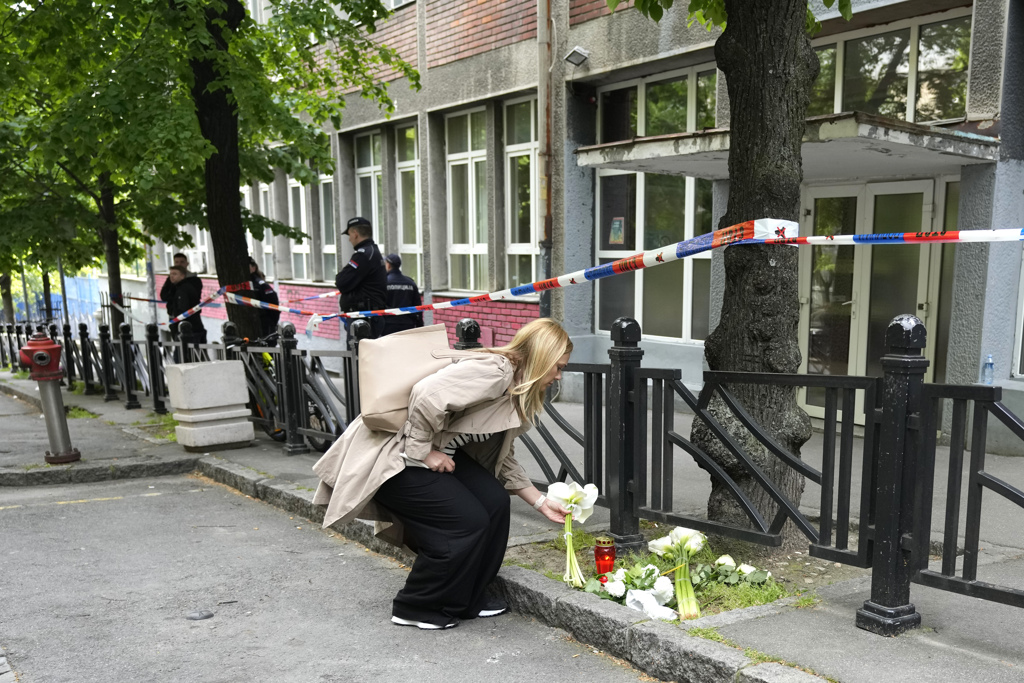综合路透社、英国广播公司报导,塞尔维亚内政部说明,枪手是七年级男学生,他带着父亲的枪之闯进首都贝尔格勒(Belgrade)的Vladislav Ribnikar小学,「这名少年涉嫌朝着学生与学校警卫开枪」,警方调派所有可用人力赶赴现场处置,逮捕了这名少年。枪手就逮后,警力仍在现场维安、调查。警方起初公布资讯称凶嫌今年14岁,但后来检方指凶嫌现年13岁。
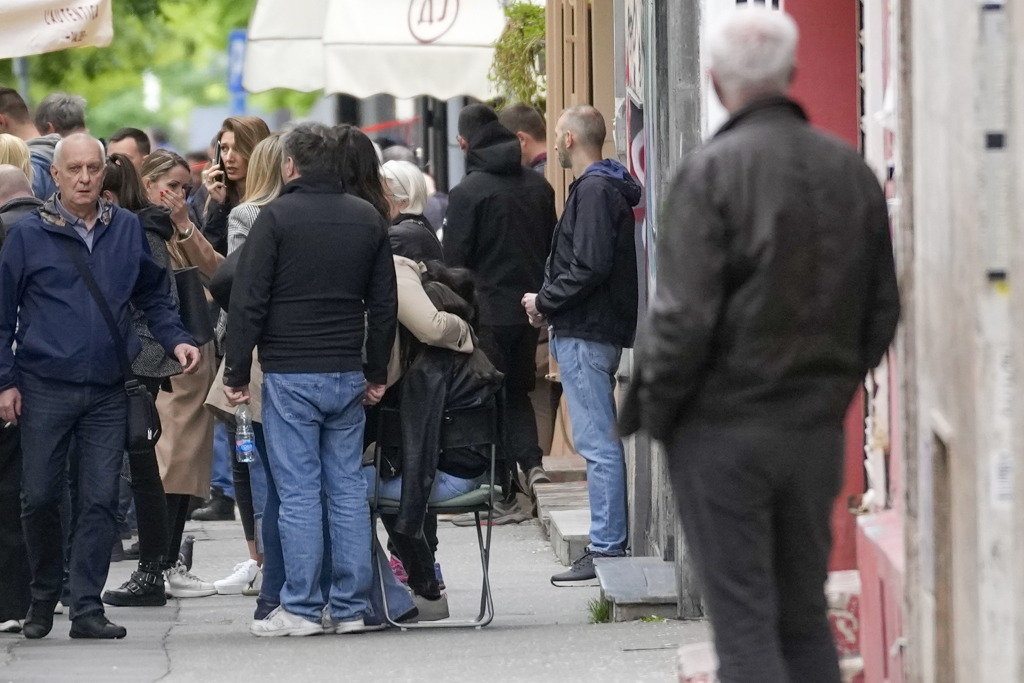 第一时间闻讯赶到现场的家长,面露惊惶之色。(图/美联社)
第一时间闻讯赶到现场的家长,面露惊惶之色。(图/美联社)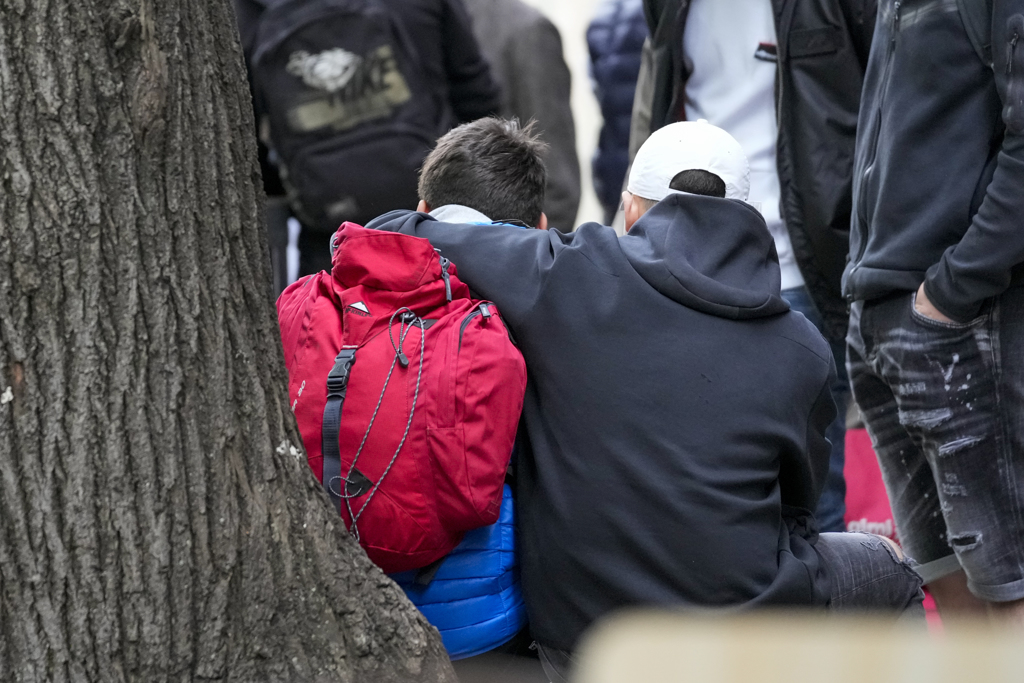
警方指出,当天上午8时40分左右接获报案电话后,大批警力赶往案发学校。一名正在上体育课的男孩听见楼下传出枪声:「枪声响个不停。我不知道发生什么事,大家的手机陆续收到讯息。」
据同学转述,这名少年走进歷史课教室之后先朝老师开枪,接着把枪口朝向教室里的同学。一名目击开枪情况的女学童向自己的父亲描述案发当时的情况。女学童的父亲转述,当时人在案发教室里的女儿赶紧躲起来,凶嫌「先朝老师开枪,接着开始随便射击」。
这名女学童的父亲听到新闻报导此事后,立刻赶往女儿就读的小学:「我看到警卫倒在桌下,还有2名女学童上衣染血。他们说,那个少年是个安静的好学生,他最近才加入女儿的班级。」
一名在邻近中学就读的女学生向塞尔维亚国营电视台RTS描述:「我看到小孩子尖叫飞奔逃出学校,家长到场之后陷入恐慌,后来我听到3声枪响。」
贝尔格雷德一家小儿科诊所协助救治3名受伤学童,其中一名女童头部重伤,已接受手术。
现场的影像显示,警方逮捕涉嫌开枪的少年之后把他带离学校,少年头部并未示人,由警方带上停在街边的警车。许多学童与家长震惊惶恐,心理学家会提供协助。
德国之声报导,巴尔干半岛国家很少发生大规模枪击事件。在塞尔维亚,持有枪枝必须先取得特别许可证,然而在1990年代大小战争留下的武器时至今日仍在黑市流通。塞尔维亚上一次发生大规模枪击案是2015年,国境北部小镇日蒂什泰(Zitiste)一家咖啡馆遭人滥射,5死22伤。
周三这起小学枪击案令百姓十分震惊,塞国一名新闻记者向《德国之声》表示:「我们从来没发生过这种……攻击儿童的事件,开枪的还是学校里的学生。」
校园枪响》塞尔维亚少年携2枪犯案还自制这武器 父亲也被捕
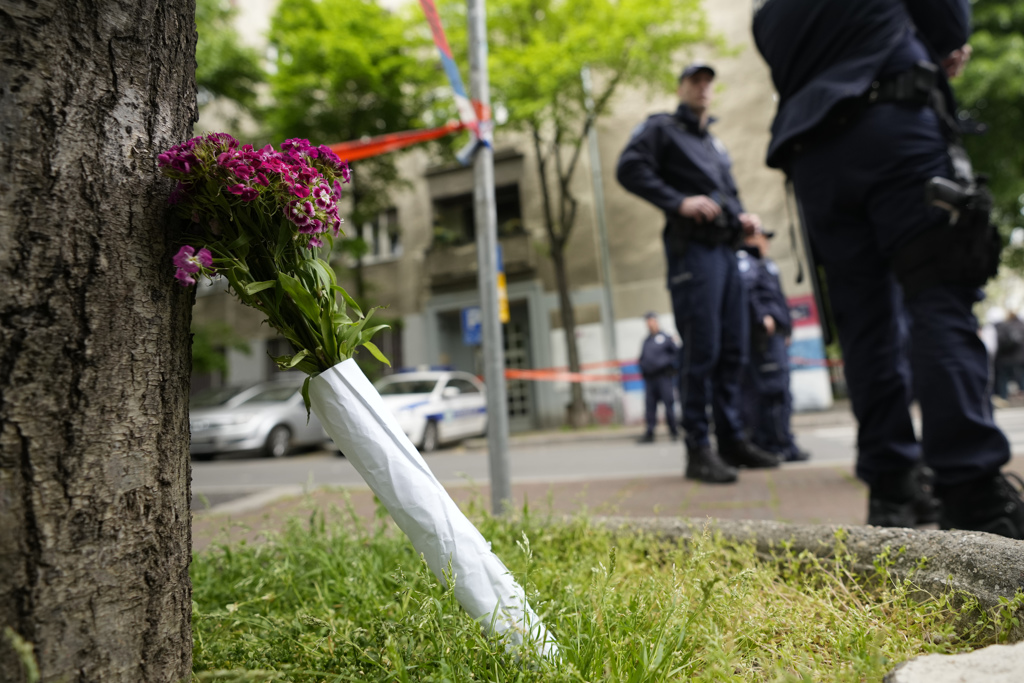
甚少发生大规模枪击案的巴尔干半岛国家塞尔维亚,周三(3日)惊传校园枪击案。首都贝尔格勒一所小学7年级男学生持父亲的手枪犯案,至少9死7伤,死者之中有8人是学生、1人是校园警卫,枪手已由赶抵校园的警方逮捕。初步搜查发现,凶嫌身怀2把手枪行凶,1个月前就计画犯案,还把特定学生列为优先攻击目标。塞国教育部证实,凶嫌曾遭同校学生暴力欺凌。
英国广播公司报导,案发地点在贝尔格勒的Vladislav Ribnikar小学,塞尔维亚警方在这名7年级少年的书桌搜到一份作案计画, 不仅开清单列出要攻击哪些学生,还画了校门入口与出口位置图,就连要先进哪一间教室开枪、按照教室编号杀人等细节也包含在内。然而学校老师说,凶嫌平常表现优异,并无心理或情绪问题迹象。
警方说明,凶嫌一走进校门口就掏枪射杀警卫,接着立刻把枪口指向坐在警卫办公桌的一名女学生,后来走进一间歷史课教室开枪。行凶动机仍待查明。不过,塞尔维亚教育部长证实,开枪的这名少年曾经遭受同侪暴力欺凌。
初步消息指称凶嫌今年14岁。检方说,这名少年现年13岁,因此可能不会受到形式责任追究。据塞尔维亚《少年犯和未成年人刑事保护法》,14岁以下儿少不能担负刑事责任。
警方还透露,凶嫌在进入校园途中留下一个袋子,他在留置袋子的地点制作了4枚汽油弹。凶嫌身上除了有2把手枪,还带了3枚弹匣,每一枚都装满15发子弹。凶枪属于凶嫌的父亲,而且均有许可证。据说凶嫌的父亲是当地知名的放射学家。警方以「严重危害公共安全」罪嫌逮捕凶嫌的父亲。
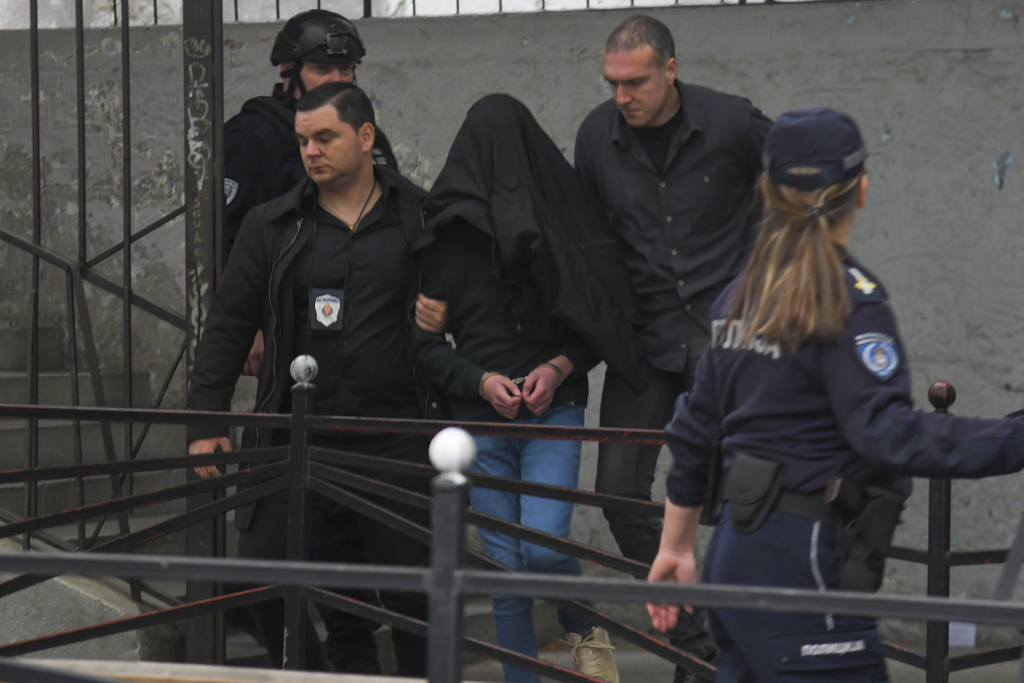

一名女学生的母亲向法新社表示,女儿听见枪声时以为是鞭炮声,「后来她看见警卫中弹倒地,吓到赶紧衝回教室向老师通报有枪击案发生,老师立刻把教室的门锁上、让学生寻找掩蔽,有些人躲在桌子底下,不知道过了多久,大家才被放出教室」。
塞尔维亚政府宣布,5月5日至7日全国为此一悲剧哀悼3天。8名死亡学生包括7女1男,其中年龄最轻的出生于2009年,大约13到14岁。伤者一共7人,1人为教师,其余均为学生,4男2女,其中1名女学生头部重伤命危,1名男学生颈部与胸部中弹、脊椎受伤,已送入开刀房。根据伤患的院所之一、塞尔维亚大学临床医学中心表示,教师出生于1970年(年约53岁),手掌与骨盆受伤。
Belgrade school shooting: boy kills 9 in planned attack
BELGRADE, May 3 (Reuters) - A boy gunned down fellow pupils in a Belgrade school on Wednesday in a pre-planned attack, shooting dead eight plus a security guard, officials said, prompting Serbia's president to announce tougher curbs on gun ownership.
Using two handguns that belonged to his father, the 13-year-old fired first at the guard and three girls in a hallway and then shot his teacher and classmates in a history lesson, police said. The teacher and six pupils were hospitalised, some with life-threatening injuries.
Veselin Milic, head of Belgrade police, said the attacker had two guns and two petrol bombs and had planned everything carefully. "He even had ... names of children he wanted to kill and their classes," he told a press conference.
Gun ownership is widespread in Serbia, which has witnessed several mass shootings over the past decade, and President Aleksandar Vucic said checks would be stepped up.
As Serbia prepared for three days of national mourning, Vucic announced a moratorium on new gun licenses other than for hunting, revision of existing permits and surveillance of shooting ranges and how civilians store their weapons.
The shooter, who gave himself up to police and at 13 is below Serbia's age of criminal responsibility, will be placed in a psychiatric institution, Vucic told an evening press conference, adding that both his father and mother had been arrested. The boy turns 14 on July 30.
"He was the best student. He had asked for a transfer to another class where he had three friends," Vucic said. "He was waiting for this day. He was at the shooting range with his father three times."
Interior Minister Bratislav Gasic said the suspect's father, had held the guns legally. Hundreds of thousands of weapons remain unaccounted for in Serbia after the Balkan wars of the 1990s.
Wednesday's shooting happened at Vladislav Ribnikar, an elementary school in Vracar, a central Belgrade district.
Evgenija, 14, said she knew the suspected gunman.
"He was somehow silent, and appeared nice and had good grades. Did not know much about him, he was not that open to everyone. I would never expect that this could happen," she told Reuters.
"I heard noises and I thought some boys, some kids were throwing firecrackers.... But then I saw the security guard falling to the ground," she said, adding that she then ran away.
'SHE MANAGED TO ESCAPE'
The interior ministry said eight children and a security guard had been killed and six children had been hospitalised along with the teacher.

"He was great guy, ...a man who loved the kids. I don't know what was in the head of that child who shot him," she told Reuters.
Health Minister Danica Grujicic, a neurosurgeon who witnessed the impact of the Balkan wars, told reporters in tears that Wednesday's events were "perhaps the most horrifying experience I have had as a doctor and as a human being."
Milan Milosevic said his daughter was in the classroom when the attacker burst in.
"She managed to escape. (The boy) ... first shot the teacher and then he started shooting randomly," Milosevic, who had rushed to the school, told broadcaster N1.
"I saw the security guard lying under the table. I saw two girls with blood on their shirts."
Vracar mayor Milan Nedeljkovic said doctors were fighting to save the teacher's life.
GUN CULTURE
Gun laws are very strict in Serbia but civilian gun ownership is also widespread.
According to the 2018 Small Arms Survey, Serbia globally ranked third with 39.1 firearms per 100 people, and more than 78,000 people have hunting licences.
The survey estimate includes many weapons held illegally since the wars and unrest of the 1990s, despite authorities having issued several amnesties for owners to hand in or register illicit guns.
In the deadliest shooting in Serbia since then, Ljubisa Bogdanovic killed 14 people in 2013. Other mass shootings occurred in 2007, 2015 and 2016. All the assailants were adults.
Luka 17, a student at the high school next to Vladislav Ribnikar, said Wednesday's tragedy had been long in the making.
"This is a mistake that the entire Serbian society is making for over a decade ...this popularisation of violent crime through public and media, through art, through everything," he said.
Our Standards: The Thomson Reuters Trust Principles.
Thomson Reuters
Reports on the Western Balkans and Ukraine. Previously worked with the Balkan Investigative Reporting Network as editor-trainer. While serving as a correspondent for the Associated Press covered the war in Kosovo in 1998-1999, the 1999 NATO bombing of Serbia and Montenegro, insurgencies in North Macedonia and the Presevo Valley, Iraq, Afghanistan, and the 2004 Orange Revolution in Ukraine. During the 1990s worked as an editor and correspondent at-large for Belgrade's Radio B92 covering wars in Croatia and Bosnia and peace processes between Israel and the Palestinian territories and in Northern Ireland. Awarded with APME Deadline Reporting Award in 2004 for the capture of Saddam.




